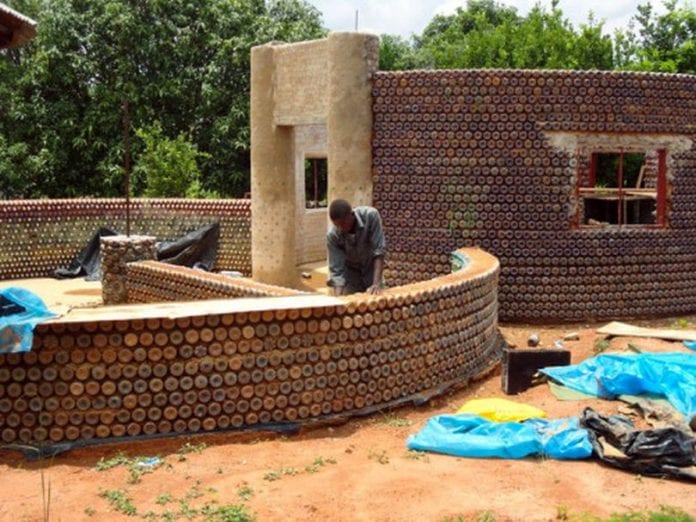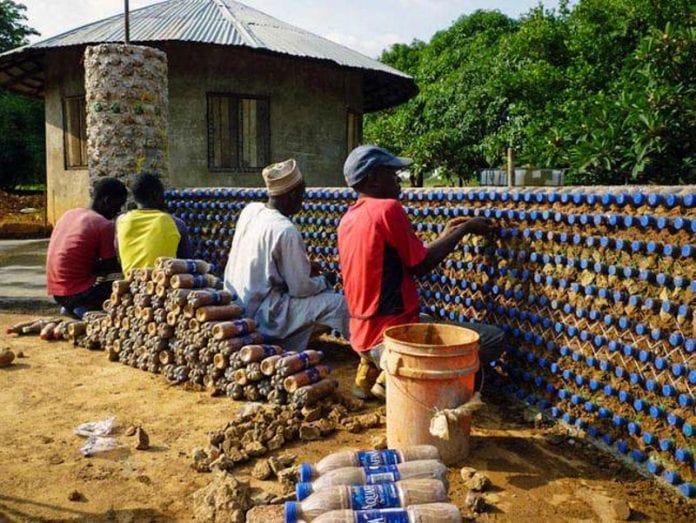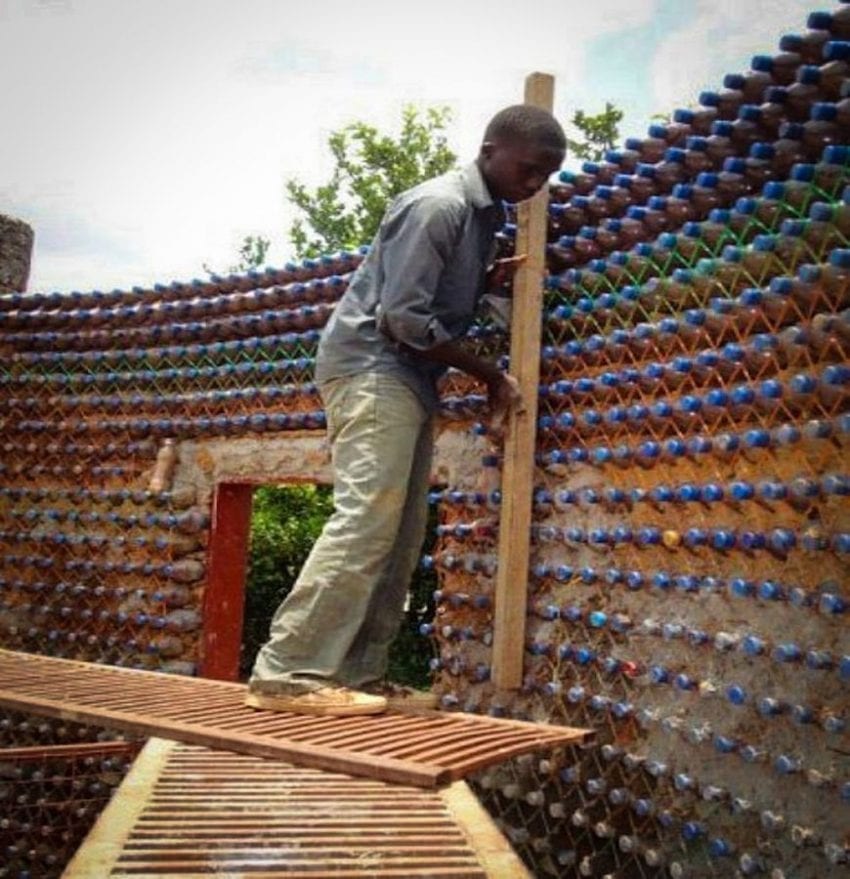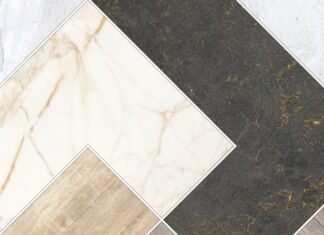In the Sahara desert, in a refugee camp, a man is building homes that can endure the harsh weather, and he’s using trash to do it.
Tateh Lehbib Breica is a Sahrawi refugee who lives in a camp in Tindouf, Algeria. He is making homes for other refugees with plastic bottles which he fills with sand.
The refugee camp he lives in is Awserd refugee camp, one of five camps around Tindoufm where Sahrawi refugees have lived for over 40 years, based on the January UNHCR post. Numerous Sahrawi people, a native group of the Western Sahara, were forced to Algeria, during the Western Sahara War in 1975, and a lot of them stayed there ever since.

The climate in Tindouf includes heavy rains, storms, and high temperatures up to 113 degrees and it often leads to damaging the homes of the refugees, which are tents or made from adobe mud brick. For example, in 2015 one storm wrecked thousands of houses in that area.
His plastic bottle houses have a more lasting structure than adobe, regarding fighting heavy rains. They are also aerodynamic, because of their circular shape, and that helps them endure storms.

“We spend months building the other fragile dwelling,” said Mailaminin Saleh, who is a refugee currently living in one of Breica’s plastic bottles homes. Her last house was made out of mud brick, and it was ruined in flood.
She said: “It is stronger and more efficient here.” She also added: “I am very happy that I have benefited from this initiative.”
Last year when Breica made his first plastic bottle house for his grandma, the UNHCR selected his idea for funding. Since then, he has worked with them on another 25 houses built in 5 camps in the area.
Breica studied renewable energy, and he built each house of about 6,000 plastic bottles he found in the surrounding dumps and around refugee camps. Sand and straw are packed inside the bottles, then the bottles are stacked in a circular shape, and coated with limestone and cement.
These houses can tackle the demanding weather conditions and also solve one huge problem: plastic waste. Around the refugee camps, plastic bottles are mostly thrown in the trash, instead of being recycled.
Over 80% of recyclable plastic bottles wind up in the junkyard every year. Plastic needs hundreds of years to decompose, and according to many scientists it never breaks down entirely.
Lehbib said: “We all know that plastic does not get undone in nature until after hundreds of years.” Also, Breica added: “There are estimates that the number is more than 300 years, and that’s how long these homes will survive, as long as the bottles are not exposed to the sun.”
Breica is not the first to use bottles for home building. In 2014 in Ecuador, one nonprofit built roofs from plastic bottles, whereas one man made his own house using beer bottles in 2010 in Argentina.
“These homes also help create jobs in a place where there is hardly any,” Breica said. He added: “It takes four people to pick up the bottles, four others to fill them, and four masons to lift it. Drivers are also required to transport sand and bottles. We are creating an industry around plastic houses.”










